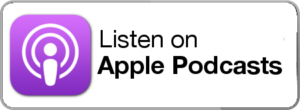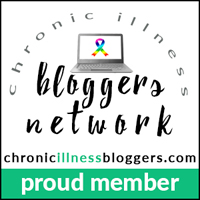Research findings from the Aging and the Quality of Life survey — conducted at University of Washington’s Rehabilitation Research & Training Center — report higher quality of life associated with a disabled person’s higher level of self-reported resilience.
After listening to this episode, check out this Fact Sheet for more information about building your resilience. Additional resources for building resilience can be found at the Greater Good Science Center and the book, Bouncing Back: Rewiring Your Brain for Maximum Resilience and Well-Being by Linda Graham.
If you’ve participated in research or clinical studies for your chronic health condition, please message me at our Facebook page.
Transcript
welcome to glass half full with leslie krongold she shares her stories experiences and knowledge of living and coping with a chronic health condition learn about tools and resources and hear inspirational interviews that help you to live a life filled with quality and dignity with two decades of support group leadership leslie’s ready to help you make lemonade out of life’s lemons are you ready are you ready welcome back well that’s for me it’s been three weeks since my last podcast episode and i have really missed it did you miss it too i hope so hey this process is good for me but i hope it’s also good for you i was out of town in the big apple so to speak attending the accessible yoga conference what a city i’m so glad i lived there when i was young and more able-bodied it’s not so much having mobility issues that prove difficult for navigating new york city there’s just so much stimuli the sights the sounds the smells all the people moving at a fast pace stairs everywhere small spaces to move through or live in oi one big oi okay back to the here and now this is the first of future episodes i hope to explore one’s participation research studies relevant to your health condition i’ve participated in several most are self-reported surveys that are either mailed to me or i take online and but self-report i mean i’m responding to questions about my behaviors feelings activities and no one is observing me it’s how i view myself this type of research is by far the easiest for most people you don’t have to leave your home i’ve also participated in research studies where i did leave my home over a period of four years i traveled across the country to rochester new york for three separate visits to a hospital clinic where not only did i fill out self-report surveys but i also had diagnostic procedures and even gave them a piece of me a piece of my leg muscle which they said was the size of a pencil eraser but i digress i won’t talk about the noise the machine made which captured my leg muscle i’ll save that for another time i’m going to focus on a different research study that i participated in since 2009 i’ve been involved in an annual self-report survey affiliated with the university of washington i’ve never met anyone affiliated with the research study and generally takes me less than an hour to complete the survey and i recall receiving a few newsletters over the years about the progress of the research well this past january i decided to contact one of the research study coordinators affiliated with the study to see if they were open to an interview and they were i spoke with amanda smith the research manager for rrtc that stands for rehabilitation research and training center this is a program funded by the national institute on disability independent living and rehabilitation research and that program is housed at the university of washington the state not dc amanda explained to me that the study i’ve been participating in for the last eight years is called aging and the quality of life survey it’s a longitudinal survey across the united states whose initial goals were to learn more about healthy and successful aging of people with disabilities and what that means as well as how people experience secondary conditions those secondary conditions secondary to their disability include pain fatigue and depression over time the study has received additional funding so the researchers have also sought to find out what barriers may exist for accessing health care and they also explored what role positive psychology has played and how people experience and manage their secondary conditions the birth of the positive psychology movement is said to have begun in 1998 it is the scientific study of human flourishing and an applied approach to optimal functioning so positive psychologists examine concepts such as happiness resilience as well as other strengths and virtues that enable individuals communities and organizations to thrive so let’s pause now and define or as researchers might say operationalize the term resilience resilience refers to the capacity to recover quickly from difficulties and balance back into shape research is affiliated with this aging and the quality of life survey at the university of washington asked people with disabilities to describe resilience and some of those comments were being buoyant rolling with or dancing with a disability taking things one day at a time while also planning for the future finding a new normal as life changes and i would say that description most resonates for me because i always feel like i’m acclimating to a new normal and when i say always um i don’t mean always i have repeated episodes of assessing what a new normal is um back to the list another uh response to what is resilience making the best of life with a disability and trusting that stressful times will pass like the weather but before we go too far into resilience let me tell you more about this study and how did they find me a men explained that they were most interested in people who were living with a disability that they had acquired earlier in life and had aged with the condition rather than aging into a disability such as osteoarthritis so it’s a notable distinction don’t you think aging with a condition but just regular aging and because you’re aging you’re more inclined to have certain disabilities such as osteoarthritis they selected four chronic conditions multiple sclerosis muscular dystrophy spinal cord injury and post polio the primary tool the researchers use to find people with muscular dystrophy is a registry at the university of rochester and i’m in that registry so i was interested to know how many people have been involved in the study and how the researchers decided to focus on certain areas such as secondary conditions so we had um 862 participants in our first survey and today we have 1518. however we did recruit some new folks into the survey when we got that new round of funding because we had initially you know folks consented to completing up to four surveys so then um we had to reconsent when we got the new grant um so i went ahead and looked and of the 1862 who completed the first survey we have 70 of those folks still participating so 1322 of them are still participating in the study is that a good sort of retention oh it is okay that’s great particularly i think for a study that um we had to reconsent so we couldn’t you know we couldn’t bug people and say hey but you completed you know this last one are you sure you don’t want to keep you know we kind of just invite them once and you know if they’d like to continue then they can we have about a 90 response rate each time point so for everyone that we send a survey to we get about 90 of them back which is pretty high and that may be due to our diligent reminder letters and reminder calls that we make i wonder if there are differences between different conditions because in my disease community myotonic dystrophy most people that i meet are so eager to participate in some type of research and especially something that is self-report just you know once a year is is very accessible yeah um and you know i know that we do get some comments that our surveys are quite lengthy um and i understand that a sentiment the primary reason i would say that that we lose folks is because of their passing um and that’s particularly true for our participants with post polio syndrome who tend to be older than the other groups of individuals and then the second reason i would say is just because we lose their contact information that they’ve either moved or gotten a new phone number and we’re not able to reach them again back in 2008 before we even did the first cycle of the survey or the first survey itself we ran some focus groups with you know folks who were living with these conditions and we asked them about what healthy aging meant to them what types of things would be important for us to look at what should we be asking and that’s that was one place where we came out of this real focus on secondary conditions and also about the importance of support so social support resilience ability to participate in valued activities so that really informed some of the questions that we asked in the subsequent surveys and then we did another round of focus groups when we got the second cycle so that would have been between the fourth and fifth survey and we asked again about this idea of healthy aging but we also asked about access to health care you know are there things that you’ve encountered and your healthcare experience that were a barrier to you you know like a scale at your doctor’s office that that is a wheelchair accessible things like that and then we drafted some access to healthcare questions based on the feedback and then went back to our our participants and asked a few of them to read them over you know are these appropriate are we missing anything uh things like that so we try and incorporate more qualitative pieces to our work when we can we also have an advisory board that includes folks from our from our projects the research is still ongoing with the seventh survey currently being processed the team will spend the next year evaluating the data and hopes their funding agency will sponsor another grant but there are tangible results and products available to the public i asked amanda about these you know researchers are using some of the data so it’s not as if it’s been held somewhere and you’re just waiting for an end date to start analyzing it what can you or other researchers glean from uh some of the work that’s been done already sure yeah so i think one of the primary themes that came out of the data from the first few years of the survey was really this focus on middle age we learned that for folks who were living with with a physical disability they tend to experience these secondary conditions like pain fatigue or depression most acutely during middle age and we found that participants who reported that these secondary conditions created just about as much trouble in their daily lives as the primary physical problems of their disability did so really this focus on a middle age we published a paper about chronic comorbid medical conditions so prevalence of things like cancer diabetes arthritis and we learned that our prevalence rates in our survey participants were slightly higher than that of the general population not a lot but slightly higher and that the age of onset was was a little bit younger than the general population and again it fell in between that middle aged middle age bracket so between 45 and 64. so so this this real focus on middle age was a big take home for us and you know a lot of the aging research that is out there is focused on people who are 65 and older well you know what about middle age so um so that was a big takeaway for us well i’ve often felt that that my i could characterize my condition to friends and family who don’t really understand it as imagine i’m 20 years older and yeah you know what would a 70 year old or plus be going through and just you know the moving slower the all the um as you call them secondary conditions that are sort of heightened at an age when my peers are not necessarily experiencing them so sure that’s a concept that we would call accelerated aging perhaps not such sobering news regarding comorbidities and accelerated aging where is the good news you ask remember i started this episode talking about resilience well i saved the best for last here amanda talks about a relationship between resilience and how people with disabilities experience their secondary conditions and we were interested in learning how resilience may be related to the ways that people experience their secondary conditions or their ability to to manage those secondary conditions as they get older i’ve had a couple podcast episodes where we do talk about resilience so that’s very interesting to have that term come up it’s it’s interesting to see the research sort of shift from you know how do we help people who are experiencing pain or fatigue to sort of this more positive focus on how do we help them build resilience how do we help them stay engaged in activities that are of value to them so i know i sent you a bunch of questions and i will get to all of them but some just pop up and i’m wondering what have you learned about resilience if anything yet yes so we’ve um we’ve published a few things about resilience i know you mentioned uh one of the charts that was included in a newsletter that we had sent out to our survey participants and that was done or that came from an analysis that we did with our survey data from the first year through the fourth year and we looked at how people reported resilience and also how they reported things that they were experiencing like pain or fatigue and also their satisfaction with their ability to participate in social activities and their physical functioning what we found was that resilience seemed to act as sort of a buffer if you will in the trajectory of those secondary conditions so people that reported higher levels of resilience at the first survey reported less of a change in things like pain over time so of those who had lower resilience reported their pain also getting much worse over the four years and those with higher resilience reported less of an increase if you will but we still don’t know uh is resilience or maybe we do know i’m not familiar with the research but is resilience something that you sort of garner in childhood and it’s stored away or is it something that people in their 40s 50s and 60s can build that i think is up for debate in the literature as a whole i i think that our researchers would argue that it’s a little bit of both um that some people you know start out with a little bit more resilience than others but that it’s certainly something that you can build and strengthen over time we produce a few different evidence-based fact sheets on different components of aging with disability and we just published one on resilience and ways that you can build resilience and so that’s available it’s free to download it’s on our website we it’s called how to bounce back okay and all of our fact sheets are written by one of our investigators or postdoctoral fellows and then reviewed by our researchers and then they go through a set of reviews with consumers so with folks who participate in our studies who are living with these conditions um we usually do at least three rounds of those on each fact sheet to get feedback on you know what’s useful what’s not is there anything we left out um what don’t you like things like that and then we do another round of revision revisions and then we publish them so we’re pretty proud of our fact sheets and i think people have found them to be pretty useful so certainly take a look we’ve got quite a few of them up on our website so how do these trickle down in healthcare workers hands throughout the country so we partner with a few different organizations to try and disseminate these as best we can certainly we don’t have a marketing budget to be able to get these out as widely as we would like but we do partner with the american association on health and disability and they promote our fact sheets for us we’ve also partnered with the national council on aging our funding agency helps to promote these for us as well and then we have you know our website and our social media accounts that we use to promote these kinds of products more good news there are organizations and books out there that can help you cultivate resilience the fact sheet which amanda talked about is linked to the podcast notes on the glass half full website i’ve also included links to the center for greater good a program affiliated with the university of california berkeley with articles and videos about resilience i invite you to check out these resources to help you build on the reservoir of resilience you already have i’m definitely working on that for myself take care and thanks again for listening thank you for listening to glass half full leslie invites you to leave a rating and review on itunes this helps spread the word to others dealing with chronic health issues for show notes updates and more visit the website glass half full dot dot online.online






2 comments on “Resilience & Aging with a Disability”